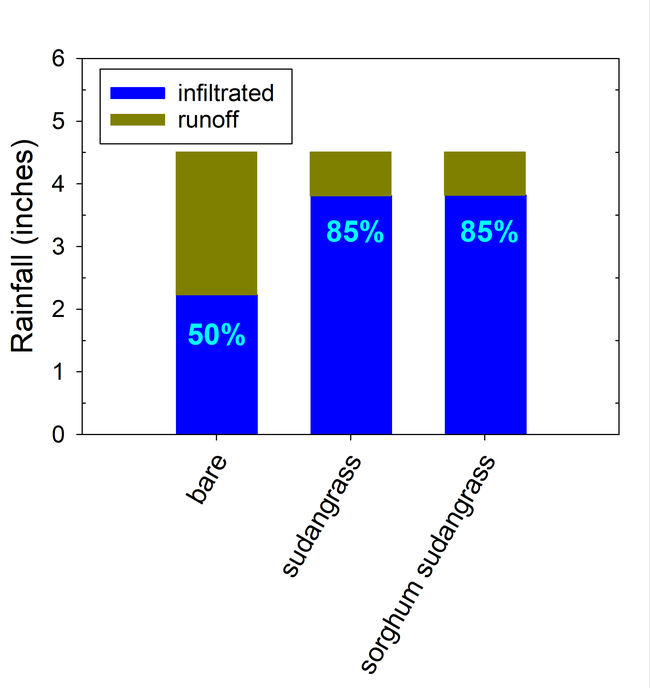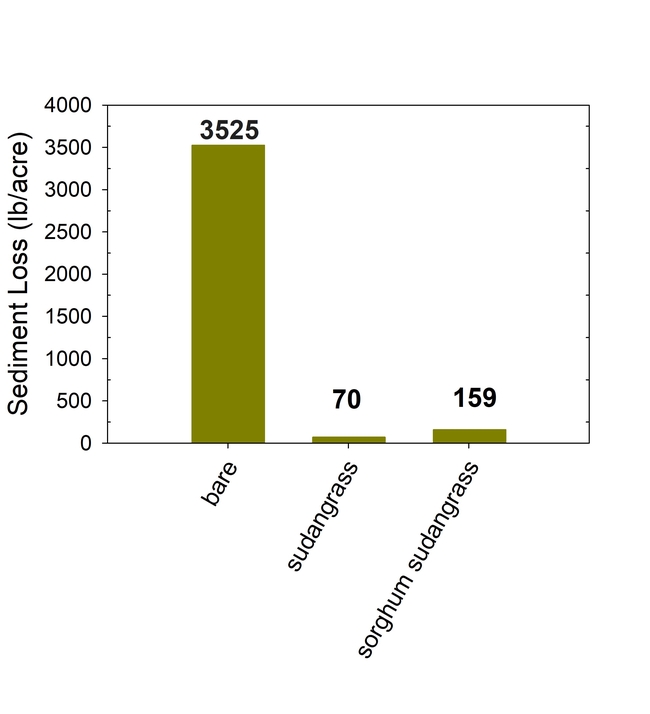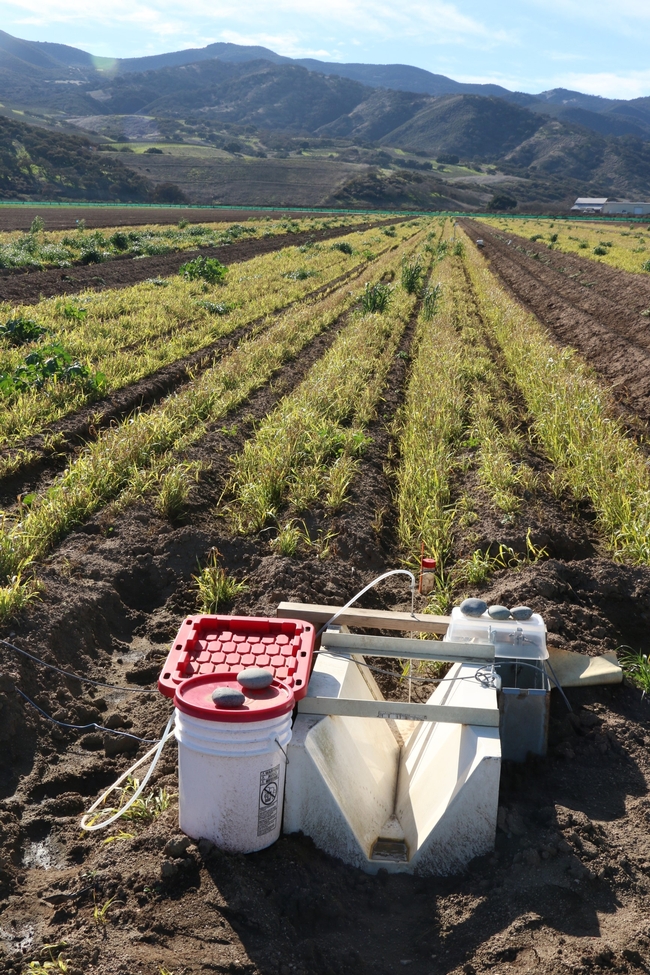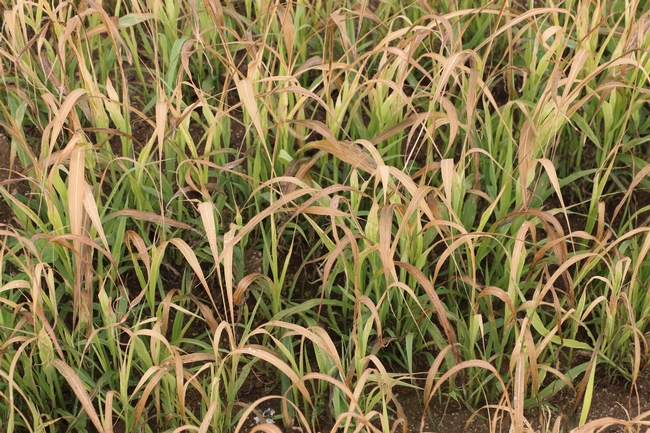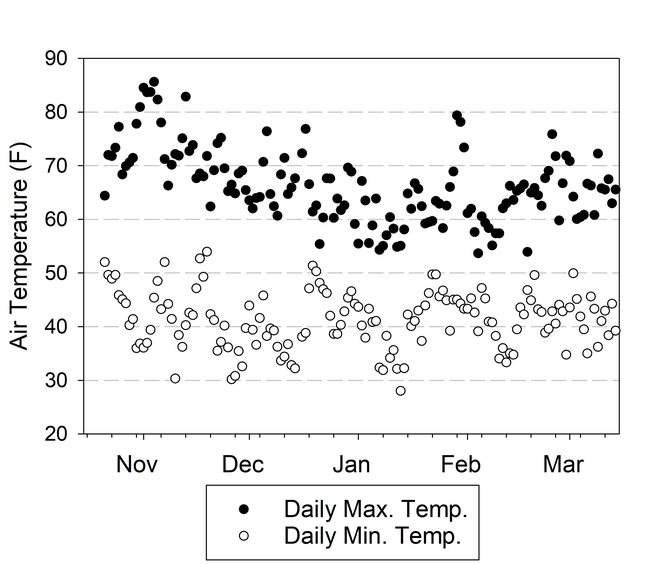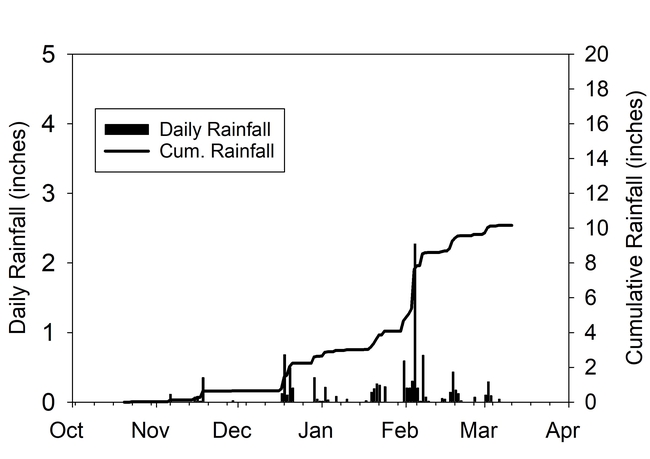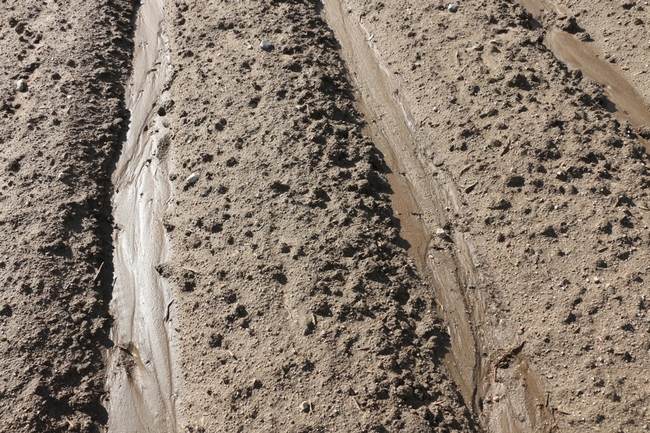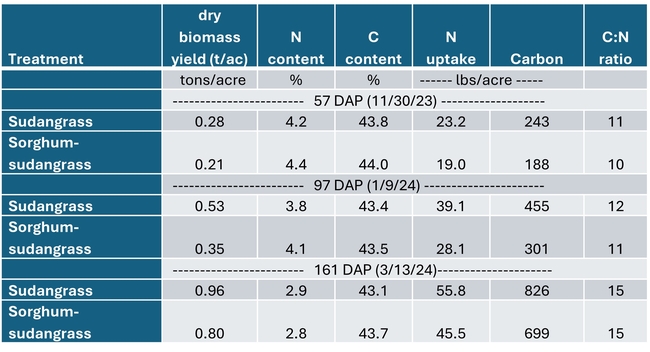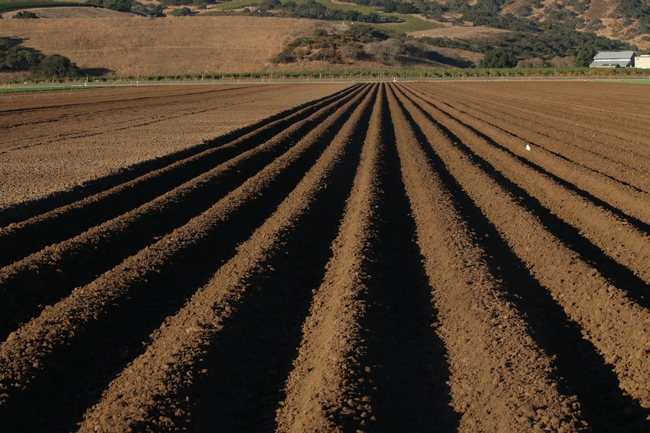Introduction
Traditional winter cereal cover crops planted in the Salinas valley have many potential benefits including, scavenging nitrate in the soil profile, increasing organic matter in the soil, and protecting the soil from erosion during storm events. However, when grown for 3 to 4 months during the late fall and winter, cereal rye, triticale, or barley can accumulate 5 to 6 tons of dry matter biomass that must be incorporated into the soil before planting a spring vegetable crop. Tilling in a high amount of cover crop biomass can be disruptive to spring planting schedules. Consequently, only a small fraction of the vegetable ground in the Salinas valley is cover cropped each year.
Previous studies demonstrated alternative strategies can limit the biomass growth of these cereal cover crop species so that they can more easily be tilled into the soil, and therefore less disruptive to spring planting schedules. After fall land preparation, the cereal cover crops are seeded into listed beds and/or in the furrow bottoms. After they become established they can reduce runoff and protect the soil from erosion during early winter storm events. Before the cover crops grow too big, they are terminated with an herbicide to limit the amount of above ground biomass that needs to be incorporated in the spring. For organic systems, planting a mustard cover crop on listed beds or furrows which can be terminated mechanically by mowing is another strategy to limit biomass. A good target for these low biomass cover crops is between 0.5 to 1 ton of dry matter per acre by the date of termination. Once terminated, the biomass begins to decompose. However, the residue on the surface continues to protect the soil from erosion and can significantly increase infiltration from rain events. This helps to leach accumulated salts in the soil as well as recharge groundwater aquifers. The remaining decomposed residue can easily be incorporated into the soil during bed preparation in the spring.
One risk of this low biomass approach is accessing fields during the winter to terminate the cover crop. If soil conditions are too wet or if there is not enough available labor, it may be difficult to fit in a spray application or to run a flail mower. This termination step also increases the cost of managing the cover crop. A possible solution is to use species that grow slowly during the winter when temperatures are cold. Sudangrass and sorghum-sudangrass hybrid are warm season adapted species that could be used in this low biomass approach to managing winter cover crops.
Field trial with warm season adapted cover crop species
A field trial was conducted with sudangrass and sorghum-sudangrass in the 2023-2024 winter to evaluate biomass growth, and the effect on storm water runoff and soil erosion compared to bare-fallow plots. The site was located on an Arroyo Seco gravelly loam soil with a slope of more than 5%. Plots measuring 1050 ft in length by four 40-inch wide peaked beds were planted with either sudangrass, sorghum sudangrass hybrid, or left bare fallow. Treatments were replicated 4 times. The cover crops were seeded at 60 to 80 lbs/acre on October 4th and were subsequently sprinkle-irrigated several times. Total water applied for establishment was 2.6 inches. One application of the herbicide Bromoxnil (Maestro) was applied about 45 days after planting to kill emerged broadleaf weeds. 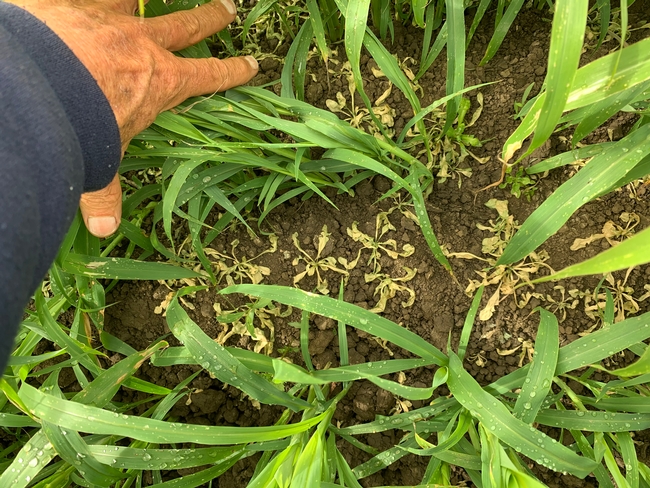
Results
Above ground biomass, N uptake, and carbon accumulation
Both cover crops had limited biomass growth, accumulating only 0.35 to 0.5 tons/acre of dry matter by early January and less than 1 ton/acre by mid March (Table 1). Growth was set back by cold conditions that occurred from mid November through early January, occasionally reaching freezing temperatures which caused damage to leaves (Fig. 1). However, the freezing temperatures lasted only a few hours and were not severe enough to kill the cover crops (Fig. 2). By March 13th the cover crops had taken up 45 to 55 lbs N/acre and had a carbon to nitrogen ratio of 15. The C:N ratio of 15 would suggest that after soil incorporation the residue would decompose rather quickly and release N for the following vegetable crop.
Runoff, rainfall infiltration, and control of soil erosion
Total rainfall measured at the trial site was 10.2 inches for the winter season. The most intense period of rainfall occurred in late January and early February which resulted in several runoff events (Fig. 3). During this period about 50% of the rainfall in the bare fallow plots was lost as runoff compared to 15% lost as runoff in the cover crop plots (Fig.4). Over the entire winter season, runoff was reduced by an average of 70% under the cover cropped plots compared to the bare fallow plots, and significantly more rainfall was infiltrated into the ground in the cover cropped plots. In addition, suspended sediment concentration was 90% and 77% less in the sudangrass and sorghum-sudangrass cover crop plots, respectively, compared to the bare plots. Turbidity, total P, and total N concentration in the runoff were also reduced under the cover crop plots compared to the bare fallow plots (Table 2).
Seasonal soil erosion losses could be calculated based on the volume of the runoff and sediment concentration in the runoff. The total loss of sediment averaged more than 3500 lbs per acre in the bare fallow plots during the winter, while erosion losses were reduced by 96% to 98% in the sorghum-sudangrass and sudangrass plots (Fig. 5). Total N losses were reduced by 83% to 86% in the cover crop plots compared to the fallow plots, and total P losses were reduce by 81% to 85% in the cover cropped plots compared to the bare fallow plots.
Conclusions
The use of warm season species such as sudangrass and sorghum-sudangrass hybrids as winter cover crops provides several advantages compared to planting cereal cover crops. The biomass growth through the winter is self-limiting due to the cold conditions that typically occur in the Salinas Valley. Because the final biomass would likely be less than 1 ton per acre, these species can be planted on listed beds in the fall rather than on flat ground. This means that in the spring, the remaining cover crop can be lillistoned into the peaked beds a few weeks before final bedshaping and planting. Cover crops planted on flat ground and have high amounts of biomass usually require many tillage passes to prepare ground for planting. Despite, having less biomass than traditional winter cereal species, sudangrass and sorghum-sudangrass hybrid cover crops provided excellent erosion control compared to leaving the ground bare, and increased infiltration of rainfall during storm events. Also these species may be able to scavenge significant amounts of nitrogen from the soil which can limit nitrate leaching during the winter months.
On the east-side of the Salinas Valley groundwater levels have been in the decline for several decades. Infiltrating as much rainfall as possible during the winter using strategies such as low biomass cover crops could potentially help recharge the aquifer in this region. We plan to conduct a second year of field trials with these warm season species to continue evaluating this approach to managing winter cover crops in vegetable systems.
Acknowledgments
This project was funded by the California Leafy Greens Research Board.
